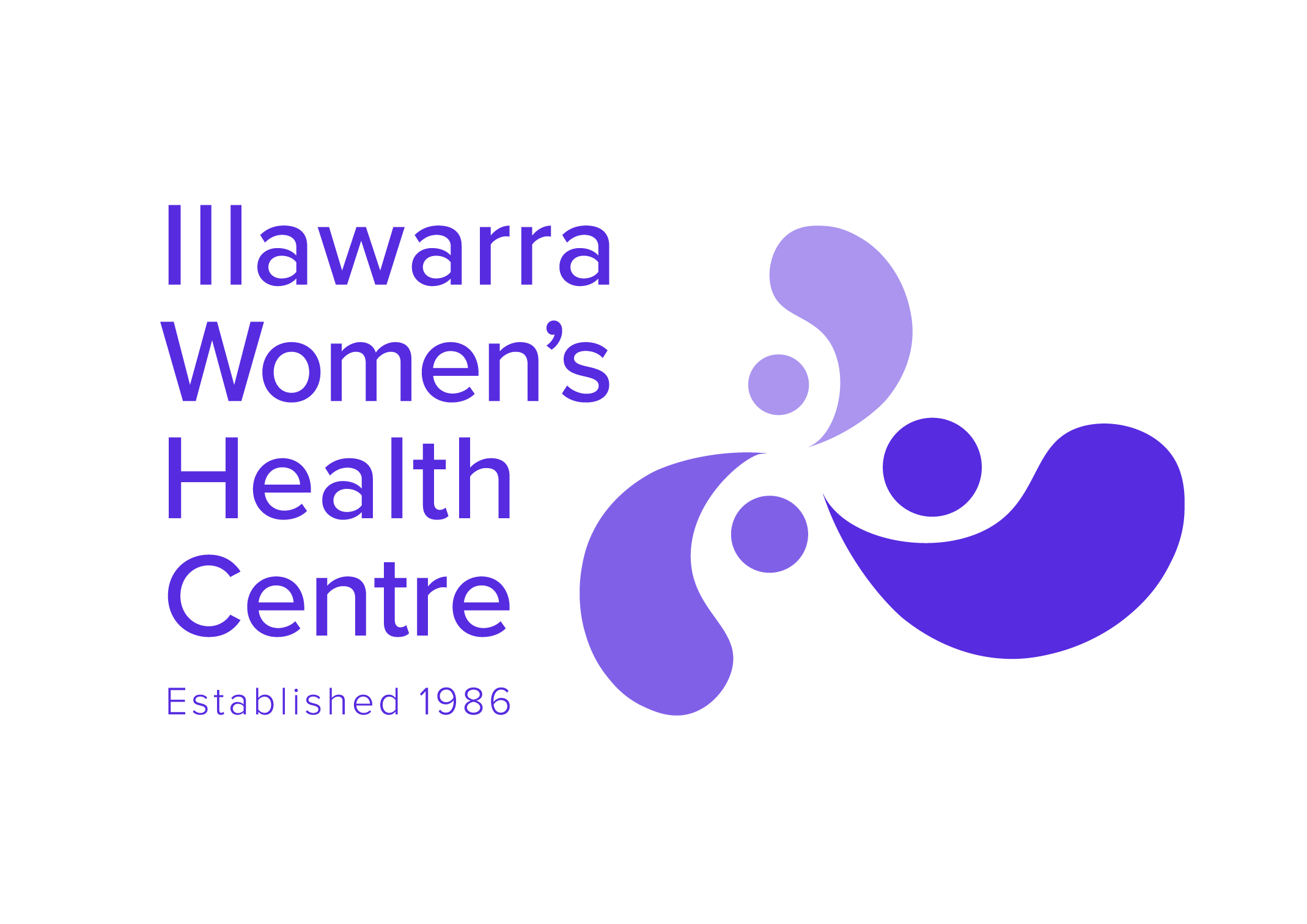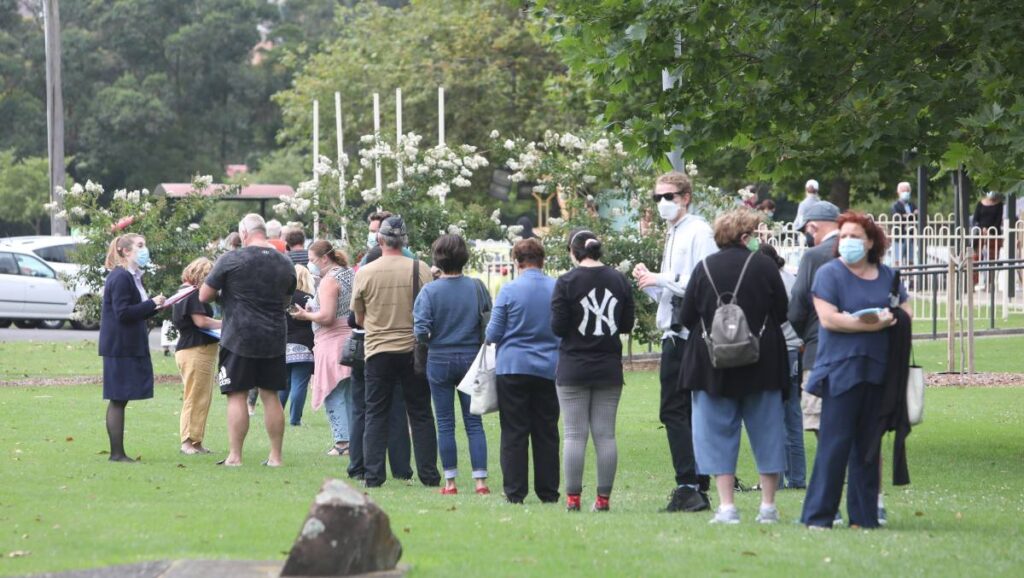Illawarra Mercury – Sally Stevenson AM
But what struck me in the dark and the rain, as I waited in the tent at Wollongong Hospital with aged people and children, families and individuals was – as much as I appreciate our health system, (and believe me I do, having worked for several years in developing countries with Médecins Sans Frontieres in a variety of emergency health settings) – women and our health issues remain, in this country, unacceptably invisible in so many ways.
One in three women, including 40 per cent in the 30-34 year bracket, have urinary incontinence, and 80 per cent of all people with urinary incontinence are women. When the call to test for COVID-19 was made, and it was clear that the testing preparedness was not adequate and could not cope with the influx of people, that night or the next day – who was thinking of the practicalities of what we were being asked to do: wait in line for many hours? Who was thinking of those that cannot stand for hours in a queue without need to go to the toilet multiple times? Will they queue at all?
Indeed, who was thinking of the single mothers with small children? Some 82 per cent of single parent households are women. I waited from 6pm to 12.30am. As a single mother with older children this was possible, but if I had little ones, it would have been impossible to stay. I would have not been tested.
Did anyone think about those who cannot stand for any length of time? How does one stand for hours and hours when suffering from fibromyalgia, a painful neurological illness that affects 2-5 per cent of the population, mainly young to middle-aged women?
We need to be confident of the emergency planning for COVID-19, including that multiple risk and response scenarios have been analysed and prepared for. But we also need to ask has there been any assessment or planning through a gender lens? What considerations were made for the particular needs of half the population, being women?
That night I recalled Caroline Criado-Perez’s brilliant book Invisible Women: Exposing Data Bias in A World Designed for Men. This intensively researched book demonstrates the world today is designed around the default human: an ‘average white male body’ exposing a male-biased world and it successfully argues that the lack of “big data” on women is equivalent to rendering half of the world’s population invisible.
It brings together a range of case studies, stories, and new research from across the world that illustrate the hidden ways in which women are forgotten, and the impact this has on our health and well-being. From government policy and medical research, to technology, workplaces, urban planning and the media, Invisible Women reveals the biased data that excludes women.
Today we live in a man’s world; a world built by men for men. For example, most offices are five degrees too cold for women, because the formula to determine their temperature was developed in the 1960s based on the metabolic resting rate of a 40-year-old, 70kg man; women’s metabolisms are slower. Criado-Perez notes that women in Britain are 50 per cent more likely to be misdiagnosed following a heart attack: heart failure trials generally use male participants. Cars are designed around the body of “Reference Man”, so although men are more likely to crash, women involved in collisions are nearly 50 per cent more likely to be seriously hurt.
Further, gender-blindness in tech culture produces what Criado Perez calls the “one-size-fits-men” approach. The average smartphone – 12cm long – is too big for most women’s hands, and it does not often fit in our pockets. Speech-recognition software is trained on recordings of male voices: Google’s version is 70 per cent more likely to understand men.
Particularly frustrating is that even when technology is seemingly built for both men and women, the male experience is still prioritised. ‘When Siri, the AI on Apple products, was first released, she – and it was she by default in the US – could tell you the nearest place to buy Viagra but couldn’t tell you where you could get an abortion.’ Ms Criado Perez has said. Notoriously, Apple also launched its health app as a comprehensive way to track your physical wellbeing. But it left out a period tracker (this has now been remedied).
Artificial intelligence is playing a growing role in medical diagnosis. If the datasets it is trained on are not representative – not only of gender, but also of race, age, and ability – dangerous decisions could be made. Women make up just 11 per cent of software developers, 25 per cent of Silicon Valley employees, and 7 per cent of partners at venture capital firms. Bytes may be neutral, but programmers are often – wittingly or unwittingly – biased.
This is not about intention, but what the invisibility of a subconscious bias against women creates. This subconscious bias is transferred into data algorithms which replicate and reinforce themselves, making women’s invisibility an ongoing structural and systemic problem.
In terms of health, as Amanda Ruggeri noted in her 2018 BBC report: women are less likely to have their pain treated, their symptoms taken seriously or to be given a diagnosis than men. Our bodies, and the conditions that primarily affect us, are less likely to have been studied in clinical trials (which make effective treatments difficult to find). Even medical products used only by women – like the oral contraceptive pill – are based on male bodies (in the case of the pill, male hormones).
Brain tumours are only one example. A 2015 study revealed a longer lag time from the onset of symptoms to diagnosis in female patients in six out of 11 types of cancer. It is not that women wait longer to seek medical attention – the delay occurs after they have first visited their GP. A 2013 study concluded that more than twice as many women as men had to make more than three visits to a primary care doctor in the UK before getting referred to a specialist for suspected bladder cancer.
Maya Dusenbery in her book, Doing Harm: the truth about how bad medicine and lazy science leave women dismissed, misdiagnosed and sick shows how women suffer because the medical community knows relatively less about our diseases and bodies and too often does not trust our own reporting of symptoms. The research community has neglected conditions that disproportionately affect women and paid little attention to biological differences between the sexes in everything from drug metabolism to disease risk factors-until recently, even the symptoms of a heart attack. Meanwhile, a long history of viewing women as especially prone to “hysteria” reverberates to the present day, leaving women battling against a stereotype that they are hypochondriacs whose ailments are likely to be “all in their heads.” Studies in the 1990s suggested that as many as 30-50 per cent of women diagnosed with depression were misdiagnosed. Furthermore, depression and anxiety are themselves symptoms of other diseases or illnesses, including trauma, which often go unrecognised in women. And, of course, the stress of suffering from an undiagnosed – and therefore untreated – disease often takes its mental toll.
Dusenbery also reports there are significantly longer delays for women when being diagnosed than men. For example, it took an average of 12 months for men to get diagnosed with Crohn’s disease, an autoimmune disease of the gastrointestinal tract, compared to 20 months for women. Men were diagnosed with Ehlers-Danlos syndrome, a group of genetic disorders that affect the connective tissue, in four years. For women: 16 years.
Possibly the most invisible and disregarded of all heath issues for women is domestic and family violence, the leading preventable contributor to death and illness for women in Australia aged 18 to 44 years.
Nothing tells us this more than the fact that while there is in Australia a national register for stolen cars which is updated every four hours, there is no national register for women murdered by an intimate partner. That while the Morrison government may have committed $150 million to domestic violence in March because of the impact of COVID-19 this money still has not been fully delivered to front line services. There has still been no communique released from the National Women’s Safety Council, which met the week before Christmas – and there has been no comment by the Morrison government on the 55 women killed by violence this year.
My wish for 2021 is that women and men, girls and boys of all colours and abilities are seen, heard, and supported with justice and equity. And until women’s health is considered important enough to research and resource fairly, and emergency planning and preparedness is examined through a gender lens, we will never have a just society. The Illawarra Women’s Health Centre in 2021 will continue to raise its voice to demand this happens.
Sally Stevenson is general manager, Illawarra Women’s Health Centre


